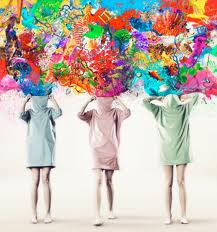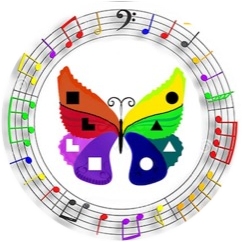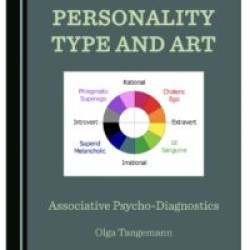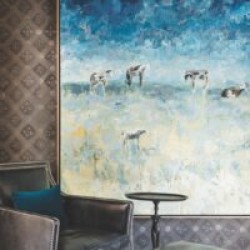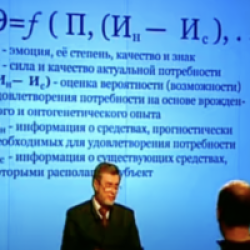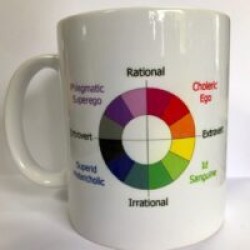TPE – Type of Psychic Energy. Associative model by Olga Tangeamnn.
From the perspective of socionics, each person possesses one of sixteen types of information metabolism. If we consider information and energy as something mutually connected and one-piece, then it is possible to assume that man is also a carrier and the spokesman of psychic energy of a specific type.
The question is: what types of psychic energy (TPE) are considered in the associative model? The Butterfly model refers to the dynamic structure of psyche on the basis of compensation between the different types of psychic energy, which are associated with four components of the structure of the personality: with the Ego, Id, Superego and Superid. In order to understand what is meant by these terms, let us turn to the theories of the personality of Sigmund Freud and Carl Jung…
The Id is the instinctive part of the personality which is responsible for the satisfaction of the physical needs of body, such as saturation of the organism by food, the need for heat and the satisfaction of sexual desires. The Id is guided by the principle of enjoyment. The purpose of the Id is, on one hand, to remove the stress that appears from the desire and, on the other hand, to reach its immediate satisfaction. In this part of the personality a chaos of passions reigns: there is no logical thinking or the realization of time. Impulses free enormous energy resources, which supply energy to an entire structure of personality. Freud compared the Id with the spoiled selfish child, who requires the satisfaction of his desires “here and now”.
When we refer to the notion of a balanced personality we mean a harmony between the opposites such as mind and heart, the soul and body. On the basis of the unity of opposites within the psyche, the author associates the types of psychic energy (TPE) with socionics’ functions, and those in turn with the colour of chakras. (9). As a result, the sixteen personality types were divided into four groups:
1.Ego-types – rational extroverts. Extroverted functions: Fe (red) and Te (orange).
2. Id-types – irrational extroverts. Extroverted functions: Se (yellow) and Ne (green).
3. Superid-types – irrational introverts. Introverted functions: Ni (blue) and Si (dark-blue).
4. Superego-types – rational introverts. Introverted functions: Ti (violet) and Fi (purple/pink).

Picture 1. Association between colors and functions in associative socionics.
Id – group is different from the others due to them valuing a pair of functions Ne+Se. Id-types are Huxley (IEE), Napoleon (SEE), Zhukov (SLE) and Don Quixote (ILE).
The best way to describe this group of 4 types as a driving life force and libido. The id-types are explorers, full of new ideas (Ne) and at the same time, they have enough power to bring ideas to life, to push them through (Se). Life instinct manifests itself clearly in the power of nature, such as grass shining gently in rocky soil. Life force is a very powerful instinct of nature and stronger than the instinct of death. If this were not so, life on earth would cease to exist.
Id-types are the people who occupy themselves with whatever is interesting and pleasurable to them. Their desires are variable, changeable, and adaptable to the current circumstances. As a rule, they have a wide range of interests, plenty of acquaintances and there are many places which they have visited already or are planning to visit. Their main merit is that they can relatively quickly and without much effort get adapted to the new situation and switch from one activity to another if that is necessary. They are oriented to the external world and the things happening around them. As far as the world is full of various pleasures and wonderful events, their interest in life and willingness to enjoy new experiences remains much stronger than melancholy and short failures. Their tears dry out quickly and there is a radiant smile on their faces again, with eyes wide open, expressing the surprise and genuine interest in everything new and uncovered. Id-types are childishly open, optimistic and cheerful, they love life and they know how to enjoy it better than any other type of people. They tend to put their own interests first, leaving interests and desires of others second. This is a reason why they might have some conflicts with others from time to time.
Id-types carry within them a creative drive, generously sharing their interests and cheerfulness with others and being a source of inspiration for those who do not possess the power of optimism and zest for life. Id-types are the bright exponents of the psychic energy ‘Id’ which, according to the Associative theory, correlates with yellow and green colours. Each mentioned colour endows the carrier of this type of energy with special characteristics.
Yellow colour – symbolises changeability, flexibility and emancipation of the human nature. Yellow characterises a person as self-sufficient, freedom-loving and cheerful. This colour is associated with laid-back behaviour, ease of communication and the free flow of its influence on external activities, like the sun spreading its light all over and sharing its warmth with all living creatures. Green colour – is the symbol of eternity, inexhaustible vivacity, and one’s potential whether apparent or hidden. This colour freshens up, calms, and inspires hope for future and the strengths to overcome obstacles. Those who choose the green colour are characterized by self-control and persistence in achieving their goals. Such people meet the challenge of failure, and can find the way out from any difficult situation, staying resilient even in the face of the danger.
Representatives: Elvis Presley,Britney Spears, Jonathan Ross, Rihanna, Pink, Susan Boyle, Rushdi Salman, Lui de Fuines etc.
